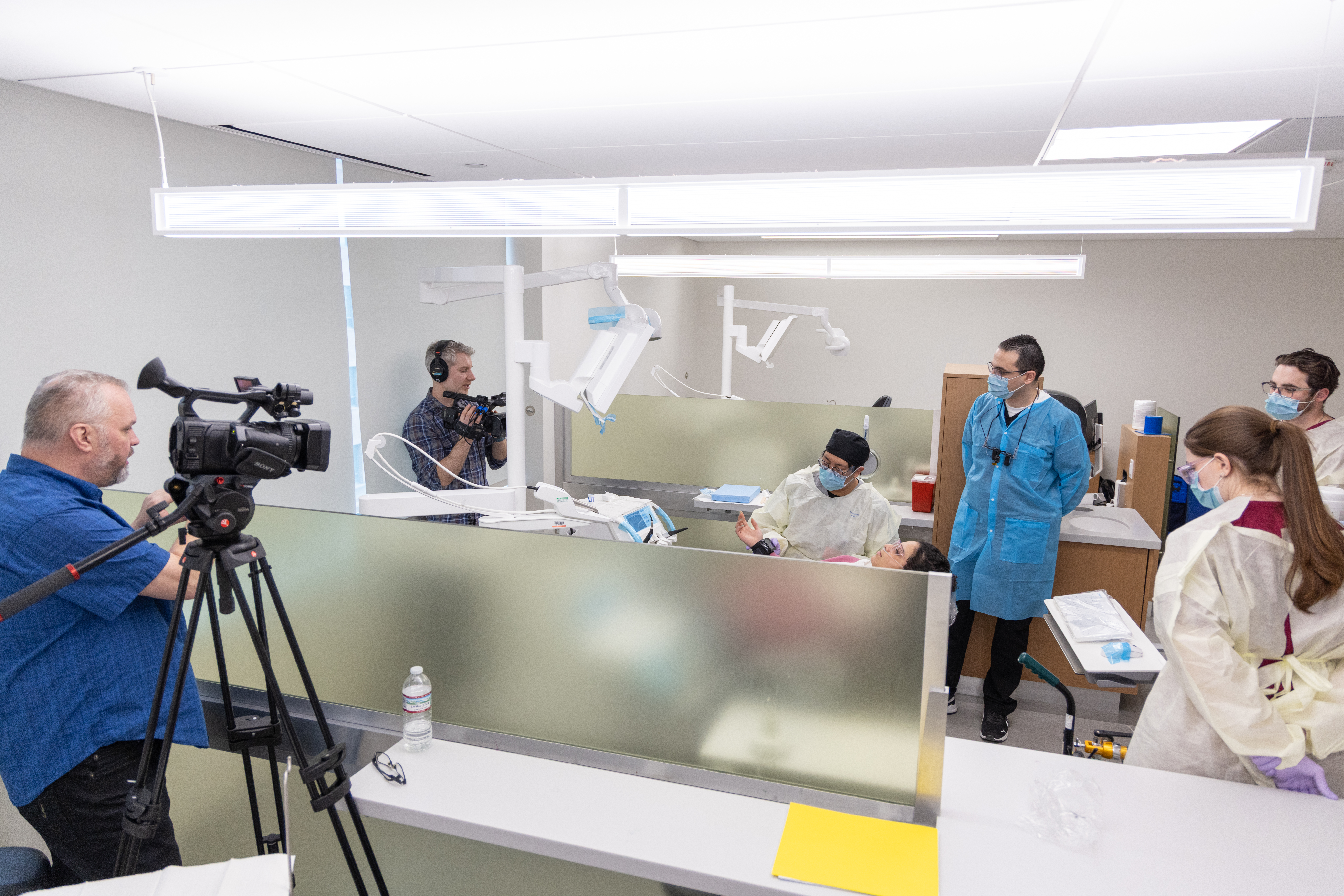New Medical Emergency Training Videos are Engaging and Educating
GSDM Clinical Affairs collaborated with BU Digital Learning & Innovation to create medical emergency videos as a visual training tool to teach faculty, staff, students, and residents how to respond during medical emergencies.
Helen Butler, Clinical Affairs operations specialist, said the goal of the new videos is to make the medical emergency scenario training informative, interactive, and invigorating.
“If you have an interactive element to the training, people tend to be more engaged and empowered to take on that information and learn from it,” Butler said. “Medical emergencies are such an important topic, and we want to ensure that everyone feels as comfortable as possible with managing them, understanding the school’s policy and feeling confident that they know what is in the medical kit on their specific floor.”

Five videos were produced, with four of them focused on the most common medical emergencies encountered at the dental school: vaso-vagal syncope, hypoglycemia, chest pain, and allergic reactions. (There was an additional video on how to correctly deal with a needle stick exposure in the clinic.) Clinical Affairs consulted with Dr. Richard D’Innocenzo, assistant dean for medical education, on all aspects of the training videos.
The new videos have been used in medical emergency training sessions for faculty across 635 Albany Street and 930 Commonwealth Avenue. Butler said the videos have also been uploaded to Blackboard so all can access them to support ongoing training.
“We just want to make sure that people are really well prepared,” Butler said. “They understand what they need to do, understand the protocol that’s in place, feel confident that they’re following the right process, and have the confidence in their own ability that they’re able to manage it.”

Students from the DMD Classes of 2025 and 2026 and GSDM faculty members were asked to volunteer in the videos as on-camera actors. Butler said the decision to feature GSDM community members made the videos more authentic—and also helped reinforce participants’ knowledge of medical emergency protocols.
“I feel like the videos come across so well because we used students that are actually used to working in our clinics,” Butler said.

Alexandra McNicholas DMD 2025 said the filming process was enjoyable and eye-opening. McNicholas wanted to help bring awareness to medical emergencies and feels the videos were successful in that vision.
“I think my favorite part of the experience was being able to have fun when filming with classmates and faculty, while also bringing awareness and helping others understand how to deal with medical emergencies,” McNicholas said. “I hope these videos encourage all of GSDM to fully grasp how to manage medical emergencies should they arise. It’s easy to assume that, as a student, you may never face such situations, but my goal is for these videos to raise awareness and prepare you for the unexpected.”